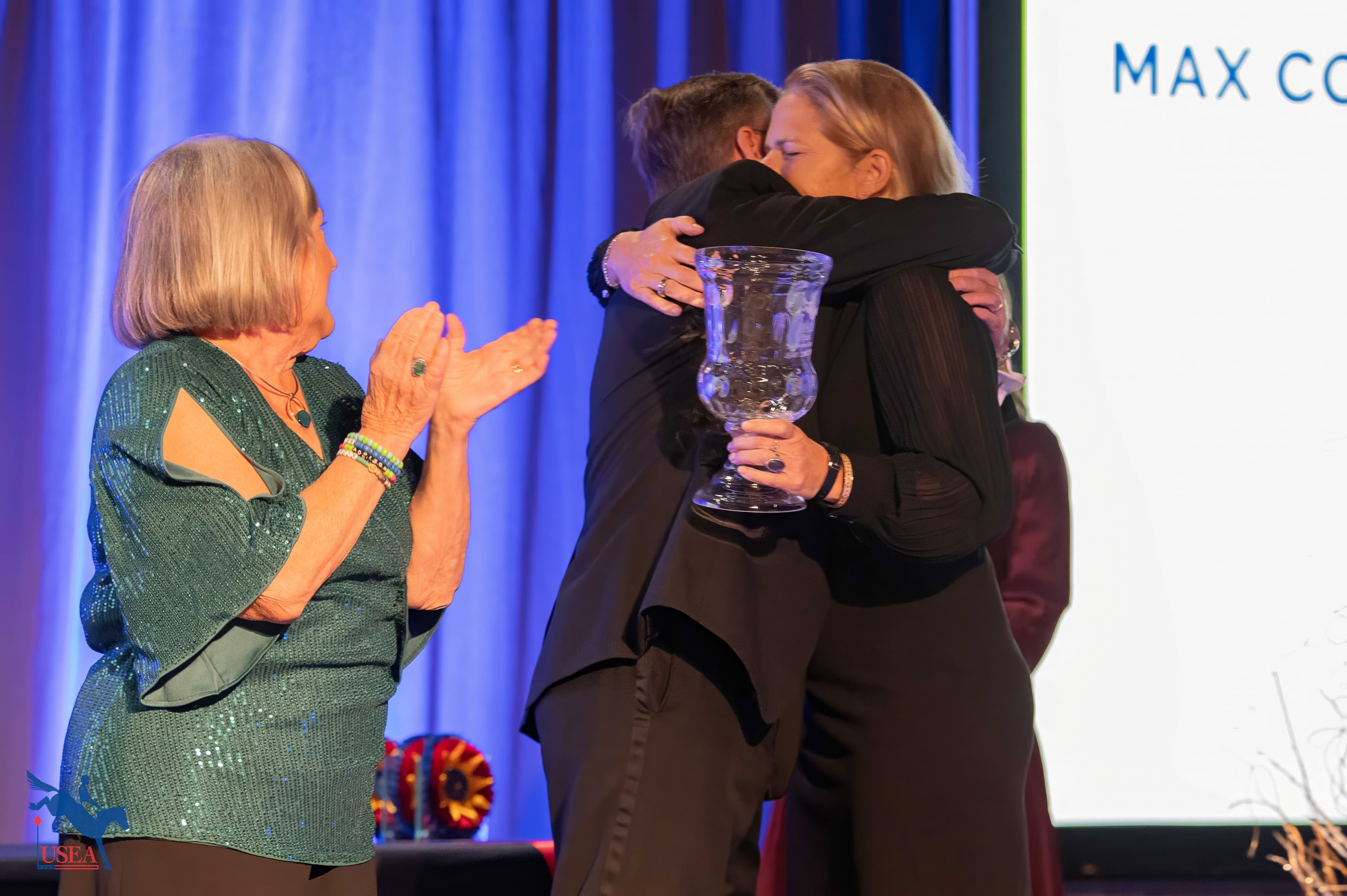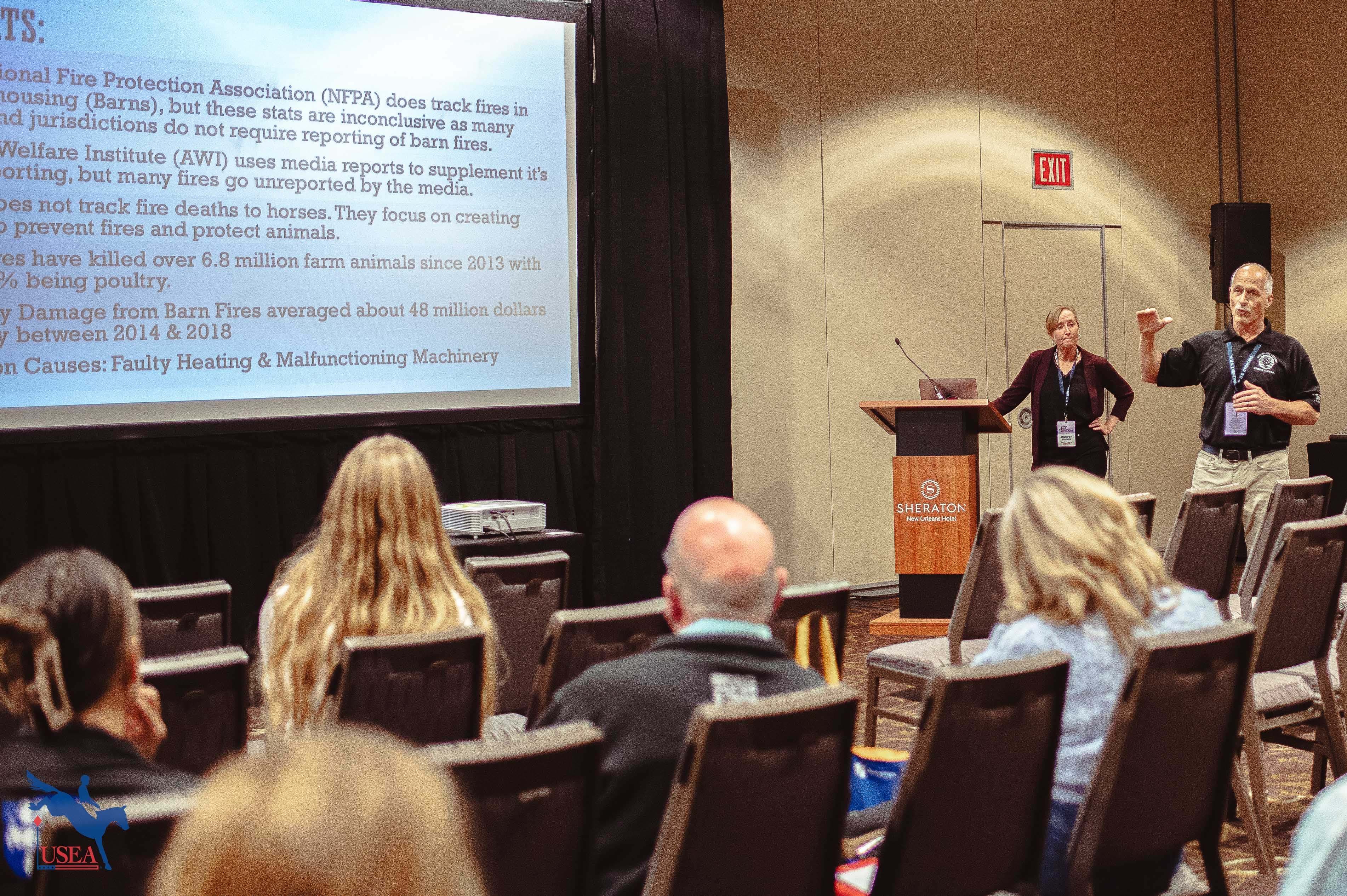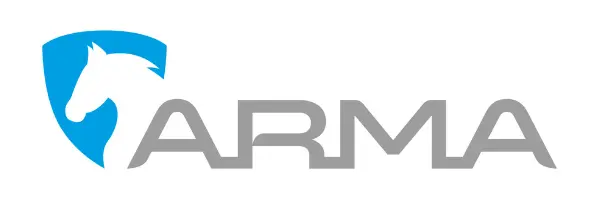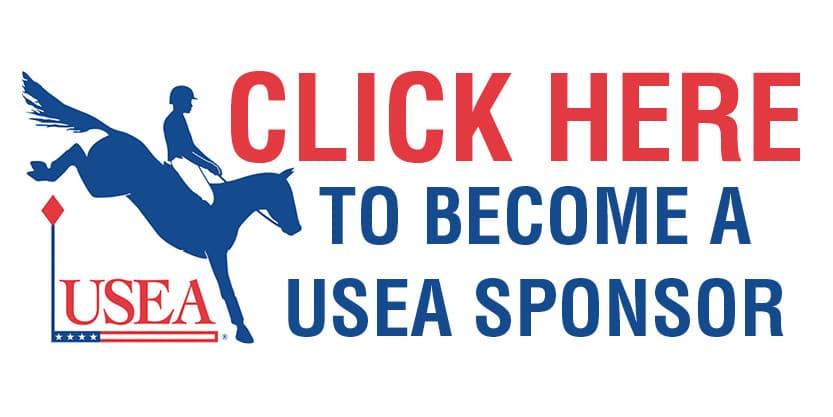Grid Pro Quo with Courtney Cooper
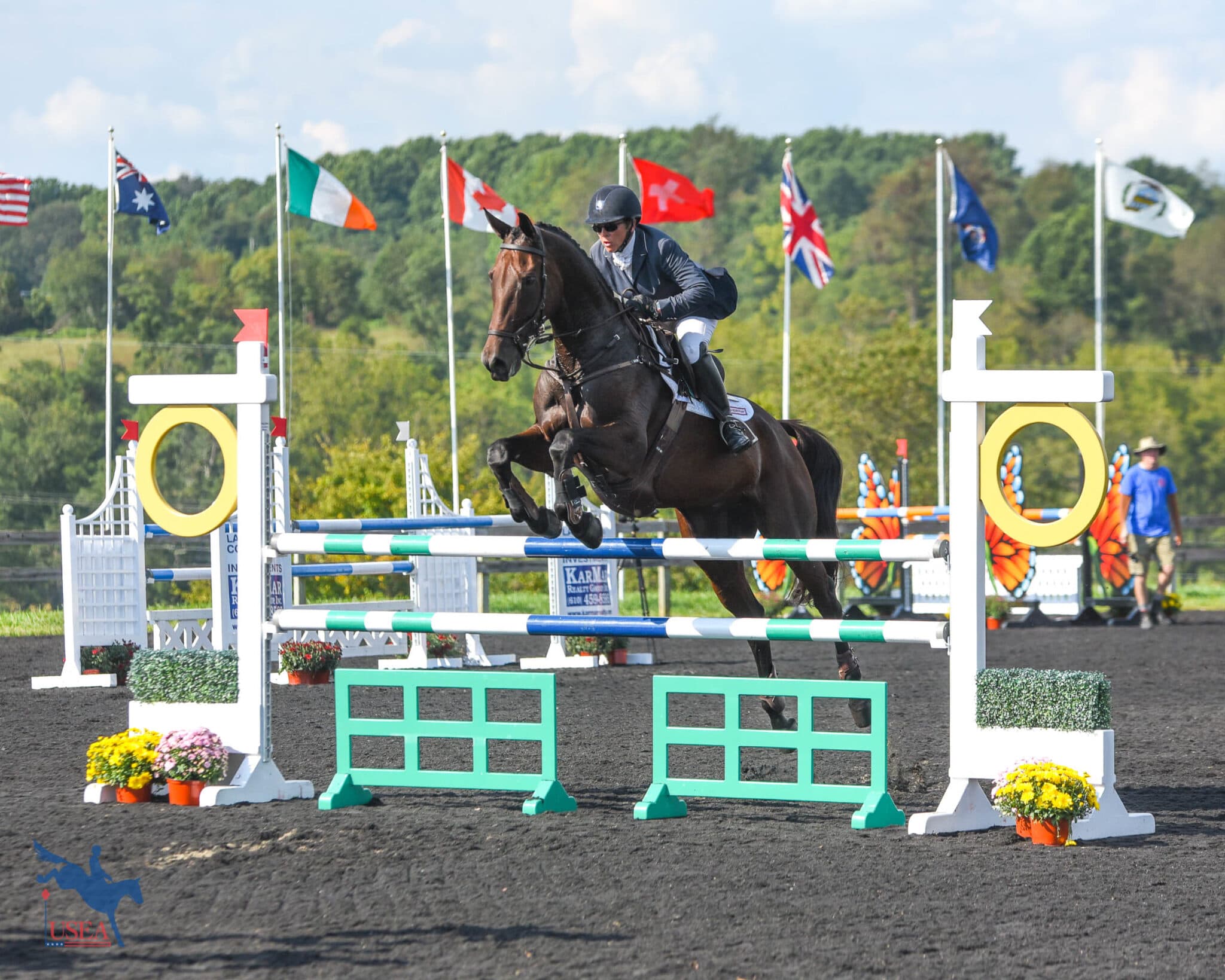
Don't let the winter weather get you down when you can use being stuck in the arena as an opportunity to fine tune your riding! In this series, we are reviving past Grid Pro Quo articles from Eventing USA to help you use the off-season to your advantage and keep you and your horse in tip-top shape for when it's time to get back out there. Click here to check out other past Grid Pro Quo exercises to spice up your arena this winter!
This is one of my favorite exercises to teach both horses and riders to stay quick on their feet while staying in balance. The bounces in the middle are your quickness exercise, and the immediate turns before and after are your balance exercise.
Why:
This is a great application for both young, green horses as well the older, more experienced horses. The younger horses will not only learn about balance and quickness, but this is a great exercise to introduce making shorter, more square turns. In time, this will help young horses to start looking for their jumps as soon as they land. All of this is part of educating young horses for a successful future show career. For the older, more experienced horses, this is an effective method to make them sharper and thinking about their feet. You can play with the height of both the bounces and the single fences to get their attention if need be.
For riders, this exercise is more about what goes on between the fences versus over the fences. The turns really teach the riders to keep their leg on before and after the fences and are a great tool to teach riders to look through their turns for their next jump.
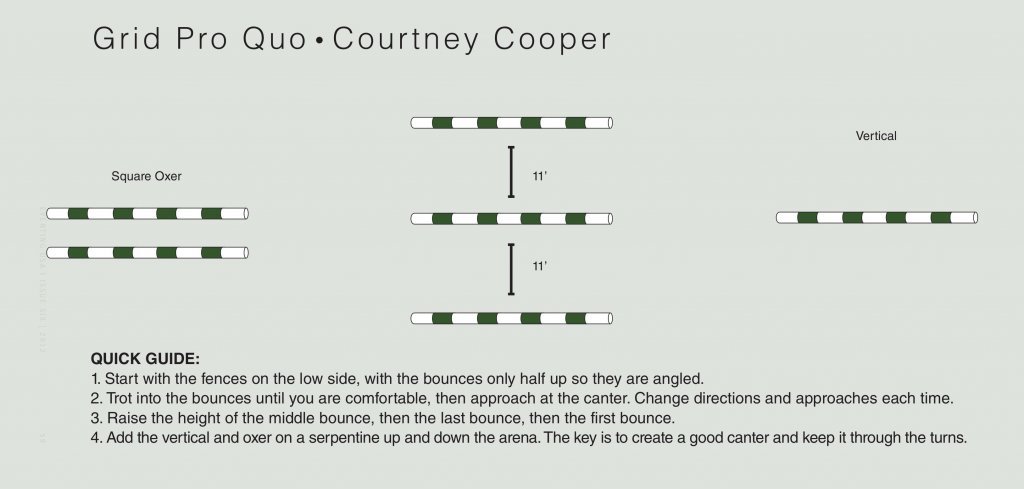
How:
Using your whole arena, put a set of double bounces in the middle and then a vertical and oxer on opposite ends. To start off, put the single fences on the low side of your comfort zone. The bounces can start with the rails only half up so they are angled down on opposite sides.
After your horse has warmed up on that, come straight through the angled bounces. The young horses and green riders can start by trotting into the exercise until they are comfortable with the footwork while the more experienced horses can canter the jumps the first time. The riders should think of these bounces as nothing more than raised cavalettis. Often times, riders overthink bounces, so this is a great intro to related exercises. As you practice the bounces, be sure to change directions and approaches.
Once your horse is comfortable with jumping through the bounces and staying supple through the turns, you can start building up the bounces. The first change will be to make the middle jump an actual vertical. Then you can add the rail on the back and finally the rail on the front jump. Regardless of the experience level, I generally leave the bounces around two feet to start. The point of the bounces is not to see how high the jumps are, but to get the horses thinking about their feet.
After the horse and rider are confidently jumping through the bounces and staying supple throughout, you can add in the vertical and oxer on a serpentine up and down the length of your arena. The bounces will help you get your horse’s hind legs active, and then you just have to continue that idea by keeping your outside leg on to square off the turn to the fences at either end of the arena.
The key is to create a good canter and keep that canter through the turns. The fences should really just come up as you canter your serpentine. After you do it a few times back and forth, take a break, change directions, and go the other way. Once you are comfortable in both directions, you can make the bounce a little bigger, starting with the middle fence, and moving on from there.
About Courtney Cooper
Courtney Cooper is best known for her successful sales business, based out of her and her husband’s C Square Farm in Nottingham, Pennsylvania. In addition to their active training and sales business, they also have a small breeding program. Learn more about Cooper at www.csquarefarm.com.
This Grid Pro Quo first appeared in Volume 42, Issue 6 of Eventing USA.

